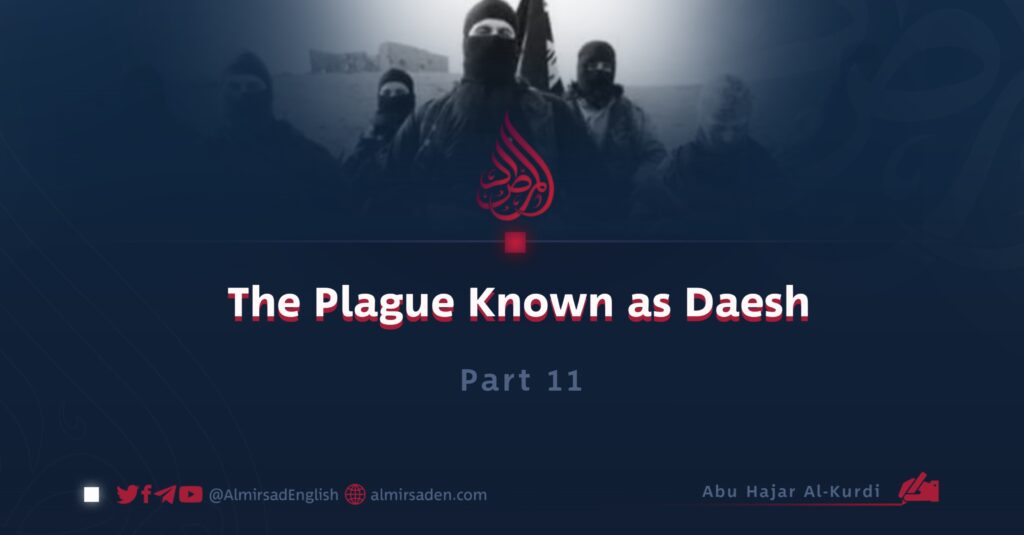Part 11
Written by: Abu Hajar Al-Kurdi
Daesh’s Crimes in Deir ez-Zor:
Deir ez-Zor is a province located in eastern Syria that, during the country’s civil war—particularly under Daesh’s control—became a significant area for horrific crimes. Due to its strategic location and natural resources, Daesh focused on this area and controlled it from 2014 to 2017.
1. Public Executions and Violation of Rights of Mujahideen and Civilians:
Under Daesh’s rule, public executions were utilized as a means of instilling fear and exerting social control. Individuals accused of blasphemy, collaboration with jihadist groups, or opposition were publicly executed. These executions were held in open areas to serve as a warning to others.
Brutal Killings:
Many individuals were brutally killed through gunfire, beheading, or burning.
Violation of Family Rights:
The families of the deceased not only were denied the right to grieve but also were compelled to live in a state of fear and silence.
2. Hostage-taking and Kidnappings:
The abduction of individuals, particularly youth and activists, was a tactic employed by Daesh for dual purposes:
a. Ransom: Daesh would demand money from families in exchange for the release of their abducted loved ones.
b. Human Shields: The abducted individuals were utilized as human shields in conflicts, placing them in grave peril against Daesh’s adversaries.
3. Sexual Violence and Exploitation of Women:
Non-Muslim women and girls in Deir ez-Zor were subjected to systemic sexual violence. Daesh regarded the sexual exploitation of women as spoils of war.
Trafficking of Women: Yazidi and other non-Muslim women were sold in slave markets and used as sexual slaves.
Violence and Torture: Numerous women endured physical and psychological torture, and those who attempted to flee faced severe repercussions.
4. Imposition of Extreme Laws:
Daesh enforced their severe laws on the populace, threatening severe sanctions for any infringements.
5. Destruction of Economy and Infrastructure:
Daesh exploited the economic resources of the region, particularly oil, to finance their operations.
Destruction of Infrastructure:
Economic structures, such as markets and educational institutions, were decimated due to warfare and Daesh’s governance, resulting in the ruination of factories and agricultural lands.
Unemployment and Poverty:
The economic devastation led to a surge in joblessness, and individuals experienced severe financial difficulties.
6. Destruction of Historical and Cultural Artifacts:
Daesh took deliberate actions to obliterate historical and cultural artifacts in Deir ez-Zor.
Destruction of Historical Buildings:
Mosques and other historical edifices, which held significant importance for the local populace, were demolished. This not only entailed the erasure of history but also inflicted considerable harm on the cultural identity of the region.
Ban on Cultural Activities:
All forms of cultural and artistic pursuits were strictly prohibited, and any transgression resulted in rigorous penalties.
Reactions and Consequences:
Following Daesh’s defeat in 2017, the evidence of their crimes in Deir ez-Zor became apparent. Numerous mass graves were uncovered, unveiling the extensive extent of Daesh’s violence. Most of the victims were Ahl al-Sunnah and Mujahideen.
